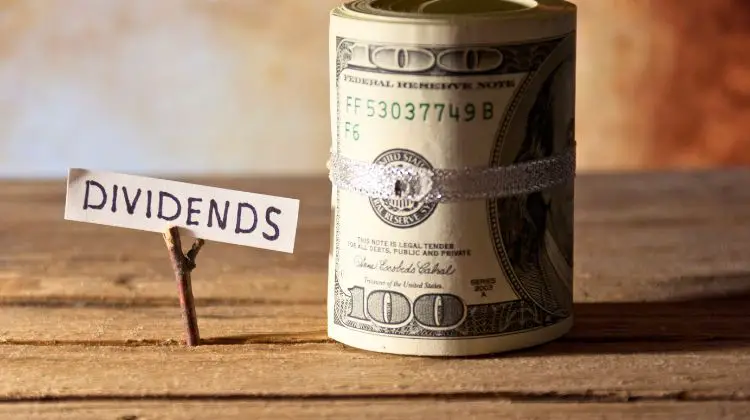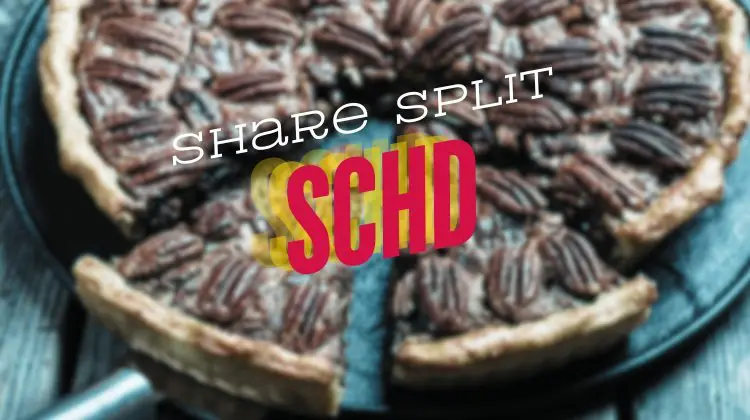
Dividends, a seemingly simple concept, can be part of a powerful investing approach. But dividends a winning strategy, requires understanding more than just the basics.
Many find comfort in consistent income. The idea of “dividends a winning strategy” isn’t just for retirees, although, this works very well if you need income. It can help anyone seeking a part of portfolio profits coming in regularly.
Table Of Contents:
- The Foundation of Dividend Investing
- Key Dividend Metrics, Explained
- Building a Portfolio With a Focus on Dividends
- Different Dividend Investing Approaches
- Important Things To Know
- Dividends a Winning Strategy: Different Investor Perspectives
- Is This Always Best? Important Considerations
- FAQs about dividends a winning strategy
- Conclusion
The Foundation of Dividend Investing
Dividends are essentially a share of a company’s profits distributed to its shareholders. Not all companies choose to do this. Some prefer to reinvest all profits back into the business for faster growth.
Companies that do issue regular payments tend to be well-established. They also are financially sound and often have a history of consistent earnings.
Why Companies Pay Dividends
Think of a company generating strong, free cash flow. They might decide their best course isn’t rapid expansion, but a return of capital to those that have a winning strategy.
This can attract investors looking for reliable income. It’s also a sign of the company’s financial strength and management’s confidence.
Key Dividend Metrics, Explained
You don’t have to be a financial guru to consider dividends a winning strategy. You need some knowledge.
Several key metrics help understand a company’s dividend situation. Understanding these measurements are how many experts make a winning strategy.
Dividend Yield
This shows the annual dividend per share relative to the stock’s price. It’s expressed as a percentage.
If a stock trades at $50 and pays a $2 annual dividend, the yield is 4% ($2/$50 = 0.04). A higher yield might seem attractive, but very high yields (over 8%) can be a red flag.
Payout Ratio
This shows the percentage of a company’s earnings used for dividend payments. If a company earns $5 per share and pays a $2 dividend, the payout ratio is 40% ($2/$5 = 0.40).
There’s no universally “ideal” ratio. However, ratios between 40% and 60% are common in experts winning strategy.
Dividend Coverage Ratio
This indicates how many times a company could cover its dividend payments with its earnings. If a company’s earnings per share are $4, and it pays a $1 dividend, the coverage ratio is 4.
Generally, a higher ratio (above 2) is better. It is better for the sustainability of the payments.
Dividend Growth Rate
This indicates how the payout has grown over time. A steady, gradual increase often means the company believes they can sustain higher dividend payouts.
Free Cash Flow
This shows a company actually has available after all expenses. It shows what a company might have for operations, and paying a shareholder dividend. Strong, free cash flow suggests dividend payments are on solid ground.
Net Debt to EBITDA Ratio
This gauges debt compared to earnings before interest, taxes, depreciation, and amortization. A high or rising ratio may show potential financial stress to dividend payout abilities. It may signal danger ahead for the dividend.
Building a Portfolio With a Focus on Dividends
You’ll want to find quality dividend stocks that give you a solid foundation to your holdings. But how do you build out a strategy with confidence?
Identifying Strong Dividend Payers
Look beyond the current yield. Search companies with a history of consistent payouts and growth, if possible.
Sectors like utilities or consumer staples are where you can often find many dividend payers. Research multiple companies and evaluate metrics beyond the yield itself.
Diversification Matters
Do not only invest in one stock, even a dividend payer. Spread risk across different industries.
Diversifying across many dividend-paying companies is how a winning strategy will pay off long term. This lowers risk of a single company’s dividend cuts affecting you too heavily.
Different Dividend Investing Approaches
There is “dividend investing.” But different strategies appeal to different investor needs.
Dividend Income Focus
Some care more about high yield to give income. These investors may accept slow stock growth.
For those depending on income (e.g., retirees), the income side is primary.
Dividend Growth Investing
Some prioritize firms increasing their dividend payments year over year. These can give future earnings growth.
Even modest starting yields, grown consistently, can compound to big income down the road. Consider Coca-Cola; it is a perfect real-world example of this with steady dividends over 60 years. This adds up substantially through reinvesting dividends.
Creating “Synthetic” Dividends
Theoretically, any stock could provide “dividends.” Simply, we just need to generate income ourselves.
If a growth stock does not offer payouts, investors can sell small parts to produce a sort of payment on their own terms. A high dividend yield strategy does not work out long term according to a study by Finominal.
Important Things To Know
Several details go beyond the initial selection. Consider this as an investor.
Tax Implications
Dividend income is taxable. The exact tax rate can depend on tax rates, filing status, as well as things like qualified vs. ordinary. Check IRS documents for current info or guidance to maximize investment returns after tax.
For a tax guide, see Publication 17 and also Publication 550 on investment income and details on capital gains/dividends.
Dividend Dates
There’s a defined process for how companies release.
- Declaration Date: This date when a company’s board announces their plan to payout.
- Ex-Dividend Date: The crucial one, where those owning the stock before that date get the payout. The stock’s price may shift downward to account for this payment at this time.
- Record Date: Who are officially entitled to receive.
- Payment Date: Where cash goes out to eligible shareholders.
The Risk of Dividend Cuts
These aren’t guaranteed. A struggling company could cut dividend payments, or end them, and potentially drop the price. A diversified holding across several helps cushion the pain for you.
The Allure of Compounding
Dividends boost long-term gains when those are automatically re-bought. That increases stock ownership. A Hartford Funds study has found dividend contributions can average close to half the return for the long run over time.
Dividends a Winning Strategy: Different Investor Perspectives
What’s “ideal” isn’t universal, where individual considerations are best for those creating an overall strategy.
Let’s break down different situations:
- The Retiree: Needs regular income streams now and values stability, but, a lower dividend is accepted, for peace of mind.
- The Young Investor: May care more about potential growth as a whole and focus more on dividend reinvesting or consider dividend growth, where even lower starting payout gives upside long-term.
- The “Total Return” Investor: May choose a hybrid or a middle ground to find good income and future gain that seeks a blended payout that balances those two concepts.
Is This Always Best? Important Considerations
The approach here won’t suit every investor.
Faster growth potential does exist, however. While less common, high growth stocks, such as technology, won’t always release cash when it is needed most.
Dividends usually are from those firms showing strength. But it’s no foolproof process. Risk assessment, analysis of the company metrics, and broad portfolio diversifying still apply, always.
FAQs about dividends a winning strategy
Is dividend investing a good strategy?
This is a good strategy with dependable payouts and can provide solid long-term returns, when they come from quality companies. But dividends aren’t the single “best” way, if that isn’t necessarily what meets a particular situation or growth need, there is a risk-tolerance matter with stock investing, dividends, or elsewhere, to have diversification to limit dependence on some company stocks at a single given time.
How much to make $1000 a month in dividends?
This will highly depend on average yield on selected holdings in portfolio construction to get to your goals for growth rate and returns for long-term planning and payout you aim to achieve at scale on your personal goals.
Is dividend capture a good strategy?
This can generate some returns, if trying a timing strategy that holds a particular time of short periods with some trade for payment captures where investors sell off once it’s released for capital gain, which often works for very expert managers who know their market sectors well. Although some suggest its short-term profitability may not occur where pricing drop occurs once a distribution happens on an ownership change or sell in that sort of time.
What is the 25 rule for dividends?
This indicates if having holdings earning $25 for every $1,000 one needs. It isn’t hard guidance with dividends, with those in markets considering yield on all stock values on hand, as there might require greater funding as shares will also come in fluctuating values and where returns will alter that too on pricing swings as well as with annual percentage yields those produce that influence outcomes down the line, so goals also adjust from where they begin often at certain times and time spans as that applies within holdings, too.
Conclusion
Dividends aren’t “magic”, although this strategy delivers rewards to investors. This requires careful research. You must have an awareness of company indicators, as well as diversification across market conditions. Dividends a winning strategy gives another path for long-run investing and meeting your long-term goals.





